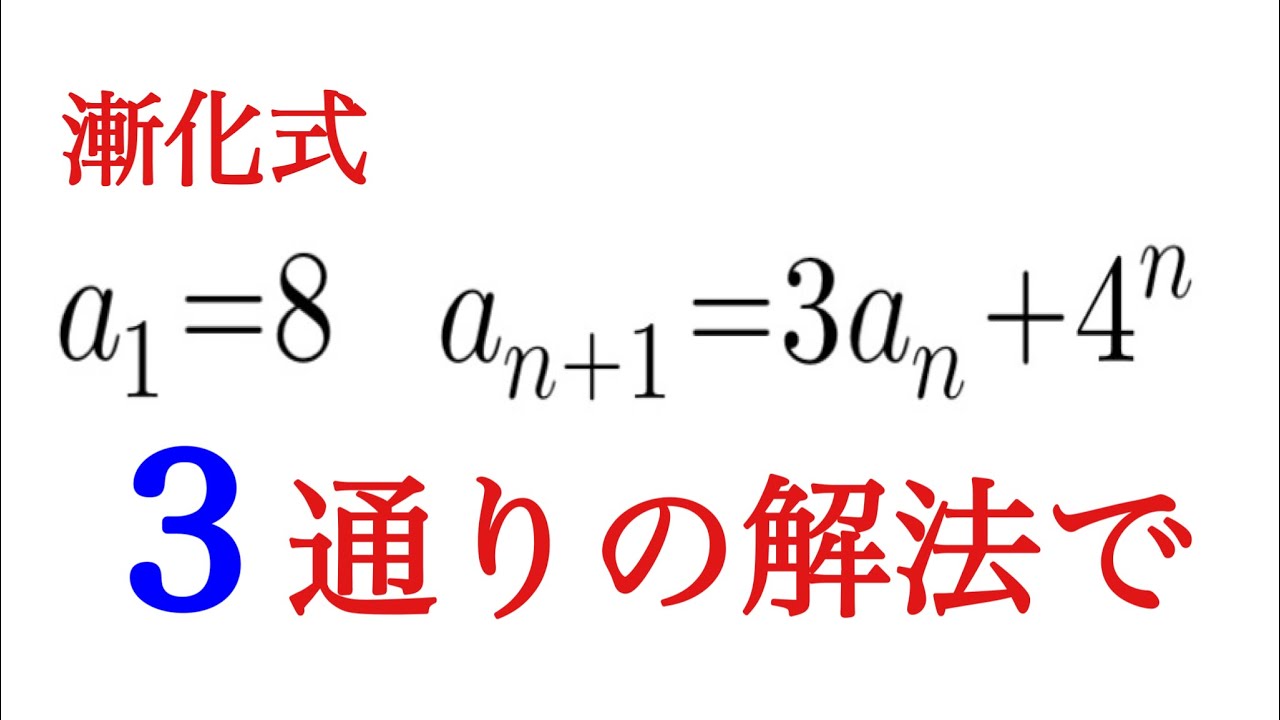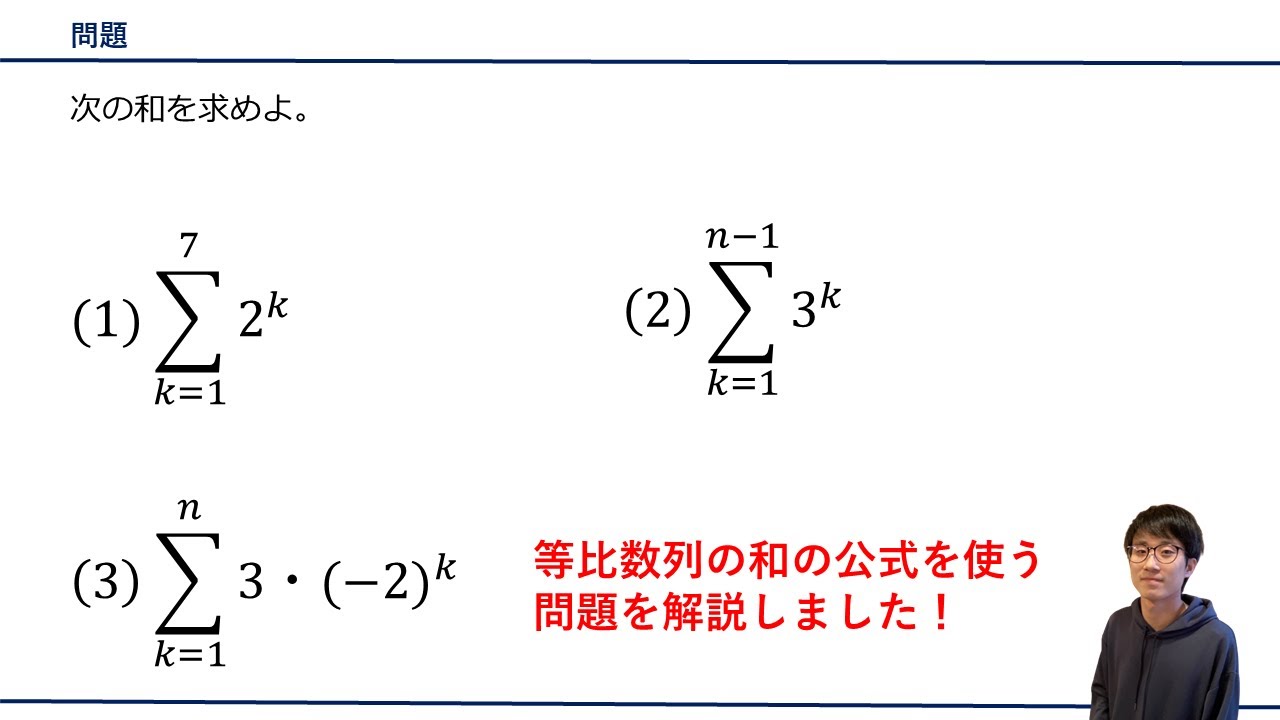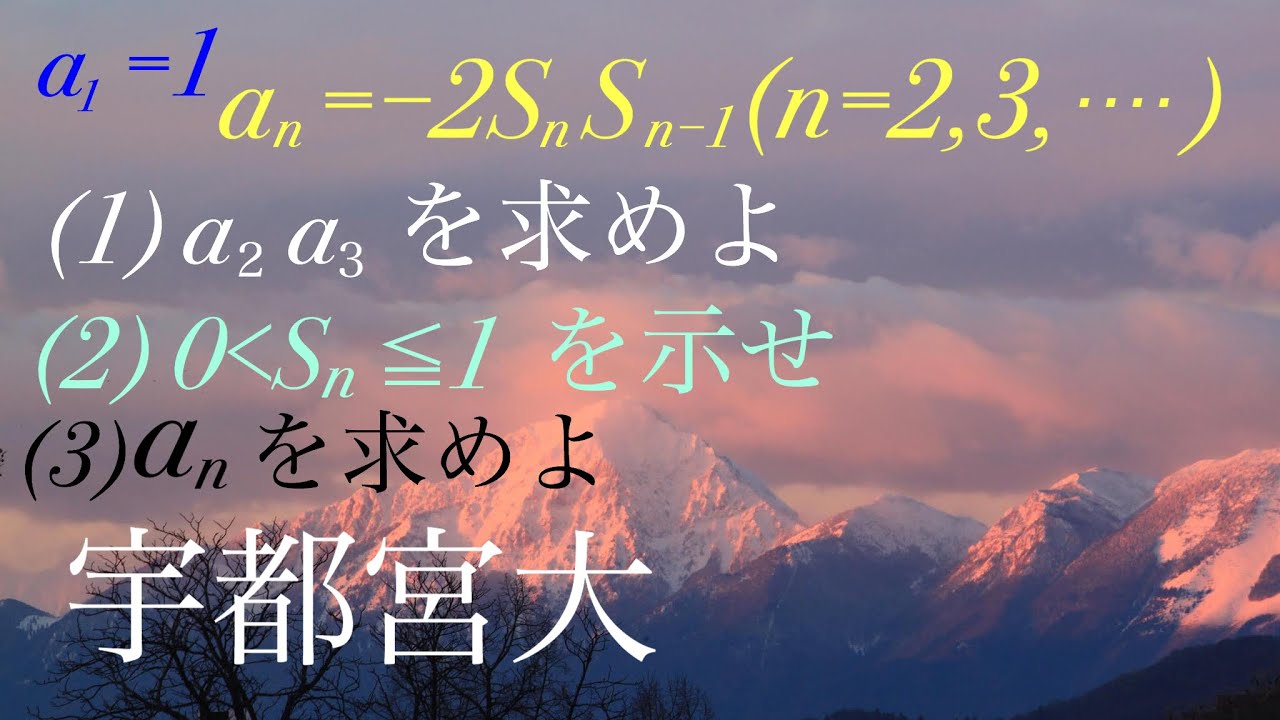問題文全文(内容文):
${\Large\boxed{1}}$実数xに対して、x以下の最大の整数を$[x]$と表すことにする。
いま、数列$\left\{a_n\right\}$を
$a_n=[\sqrt{2n}+\frac{1}{2}]$
と定義すると
$a_1=\boxed{\ \ ア\ \ },\ \ \ \ a_2=\boxed{\ \ イ\ \ },\ \ \ \ a_3=\boxed{\ \ ウ\ \ },\ \ \ \ a_4=\boxed{\ \ エ\ \ },\ \ \ \ a_5=\boxed{\ \ オ\ \ },a_6=\boxed{\ \ カ\ \ },$
となる。このとき、$a_n=10$となるのは、$\boxed{\ \ キク\ \ } \leqq n \leqq \boxed{\ \ ケコ\ \ }$の場合に限られる。
また、$\sum_{n=1}^{\boxed{\ \ ケコ\ \ }}a_n=\boxed{\ \ サシスセ\ \ }$である。
2022慶應義塾大学総合政策学部過去問
${\Large\boxed{1}}$実数xに対して、x以下の最大の整数を$[x]$と表すことにする。
いま、数列$\left\{a_n\right\}$を
$a_n=[\sqrt{2n}+\frac{1}{2}]$
と定義すると
$a_1=\boxed{\ \ ア\ \ },\ \ \ \ a_2=\boxed{\ \ イ\ \ },\ \ \ \ a_3=\boxed{\ \ ウ\ \ },\ \ \ \ a_4=\boxed{\ \ エ\ \ },\ \ \ \ a_5=\boxed{\ \ オ\ \ },a_6=\boxed{\ \ カ\ \ },$
となる。このとき、$a_n=10$となるのは、$\boxed{\ \ キク\ \ } \leqq n \leqq \boxed{\ \ ケコ\ \ }$の場合に限られる。
また、$\sum_{n=1}^{\boxed{\ \ ケコ\ \ }}a_n=\boxed{\ \ サシスセ\ \ }$である。
2022慶應義塾大学総合政策学部過去問
単元:
#大学入試過去問(数学)#数列#数列とその和(等差・等比・階差・Σ)#学校別大学入試過去問解説(数学)#慶應義塾大学#数学(高校生)#数B
指導講師:
福田次郎
問題文全文(内容文):
${\Large\boxed{1}}$実数xに対して、x以下の最大の整数を$[x]$と表すことにする。
いま、数列$\left\{a_n\right\}$を
$a_n=[\sqrt{2n}+\frac{1}{2}]$
と定義すると
$a_1=\boxed{\ \ ア\ \ },\ \ \ \ a_2=\boxed{\ \ イ\ \ },\ \ \ \ a_3=\boxed{\ \ ウ\ \ },\ \ \ \ a_4=\boxed{\ \ エ\ \ },\ \ \ \ a_5=\boxed{\ \ オ\ \ },a_6=\boxed{\ \ カ\ \ },$
となる。このとき、$a_n=10$となるのは、$\boxed{\ \ キク\ \ } \leqq n \leqq \boxed{\ \ ケコ\ \ }$の場合に限られる。
また、$\sum_{n=1}^{\boxed{\ \ ケコ\ \ }}a_n=\boxed{\ \ サシスセ\ \ }$である。
2022慶應義塾大学総合政策学部過去問
${\Large\boxed{1}}$実数xに対して、x以下の最大の整数を$[x]$と表すことにする。
いま、数列$\left\{a_n\right\}$を
$a_n=[\sqrt{2n}+\frac{1}{2}]$
と定義すると
$a_1=\boxed{\ \ ア\ \ },\ \ \ \ a_2=\boxed{\ \ イ\ \ },\ \ \ \ a_3=\boxed{\ \ ウ\ \ },\ \ \ \ a_4=\boxed{\ \ エ\ \ },\ \ \ \ a_5=\boxed{\ \ オ\ \ },a_6=\boxed{\ \ カ\ \ },$
となる。このとき、$a_n=10$となるのは、$\boxed{\ \ キク\ \ } \leqq n \leqq \boxed{\ \ ケコ\ \ }$の場合に限られる。
また、$\sum_{n=1}^{\boxed{\ \ ケコ\ \ }}a_n=\boxed{\ \ サシスセ\ \ }$である。
2022慶應義塾大学総合政策学部過去問
投稿日:2022.07.02






